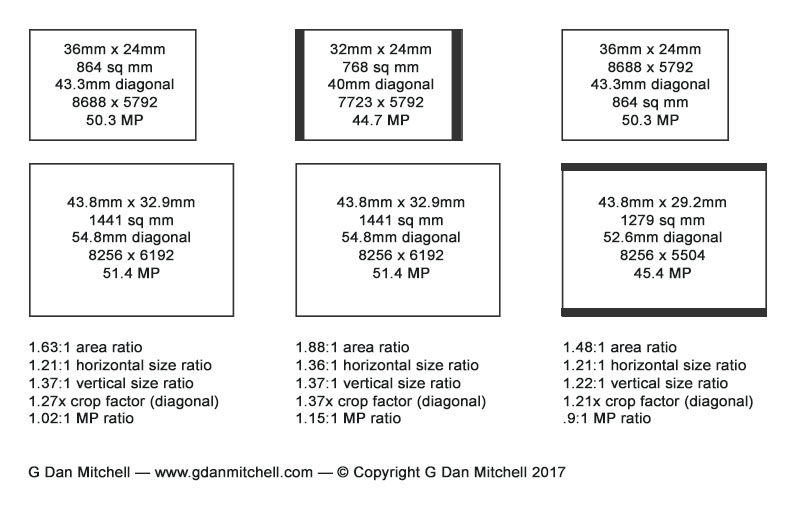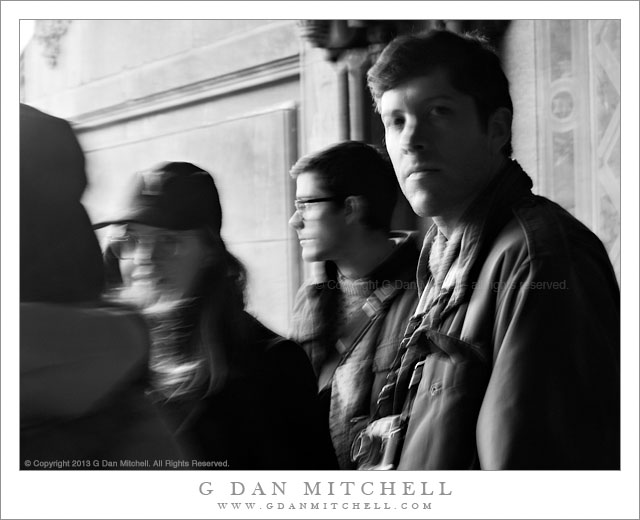
Starting a few years ago with cameras like the Pentax 645d and then 645z and continuing with new cameras from Hasselblad and Fujifilm, systems using the “miniMF” 33mm x 44mm sensors have become more readily available and less expensive.
In preparation for writing something about the merits of the two types of systems I created this image that holds quite a bit of technical comparison data based on pixel counts (e.g. — “megapixels”), sensor size, and ways of comparing them.
For now I won’t try to analyze this too much, except to say that comparisons between the two formats are more complicated than you might think and they are somewhat subjective — it matters how you plan to use them. For example, do you prefer to use the 3:2 aspect ratio of full frame, or the 4:3 ratio of miniMF, or will you adapt to whichever you are using? This chart shows you how that affects your comparisons.
NOTE: The graphic is a first attempt at including a lot of information in a single chart. It has some problems, especially with the numbers representing crop factor. I’ll update the image to correct the errors before long, and at that point I’ll use it in a more substantive post about comparing the formats.
© Copyright 2016 G Dan Mitchell – all rights reserved.
 G Dan Mitchell is a California photographer and visual opportunist. His book, “California’s Fall Color: A Photographer’s Guide to Autumn in the Sierra” is available from Heyday Books and Amazon.
G Dan Mitchell is a California photographer and visual opportunist. His book, “California’s Fall Color: A Photographer’s Guide to Autumn in the Sierra” is available from Heyday Books and Amazon.
Blog | About | Flickr | Twitter | Facebook | Google+ | LinkedIn | Email
All media © Copyright G Dan Mitchell and others as indicated. Any use requires advance permission from G Dan Mitchell.

